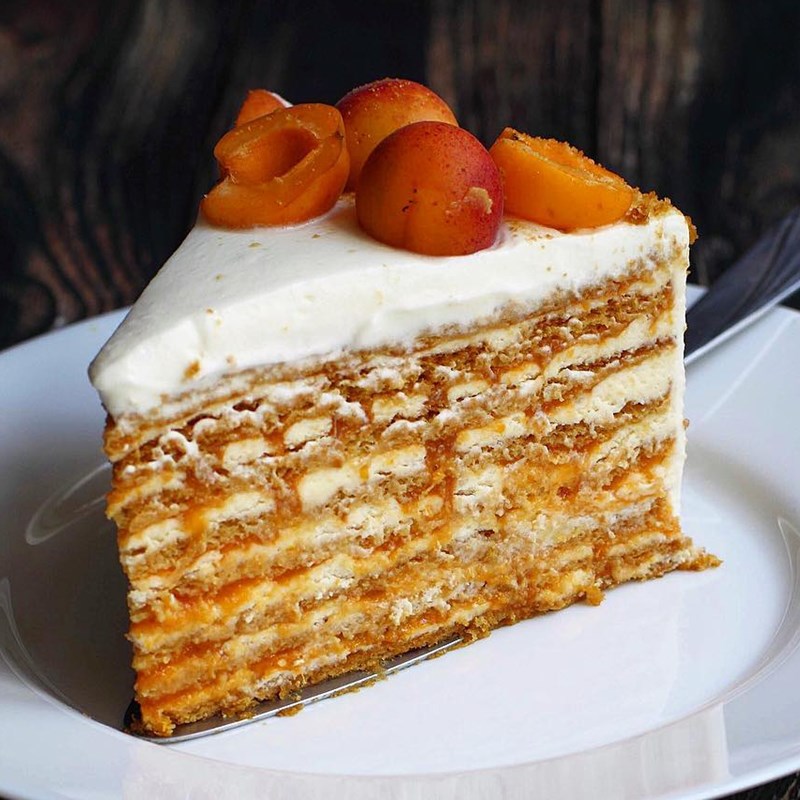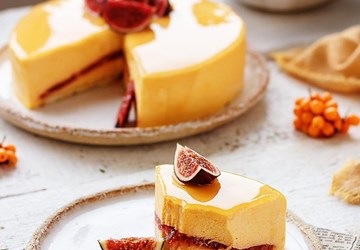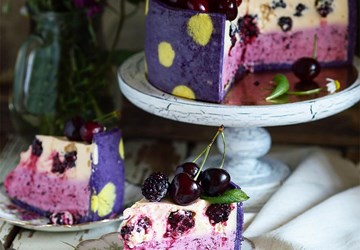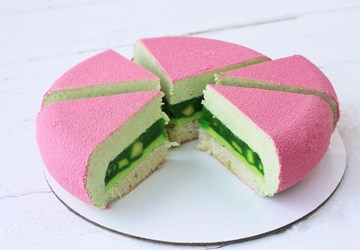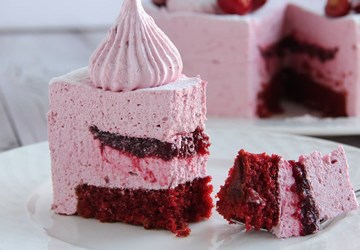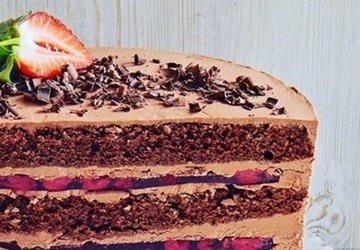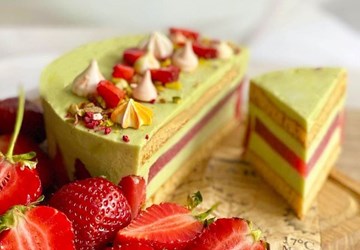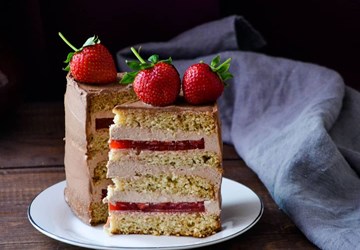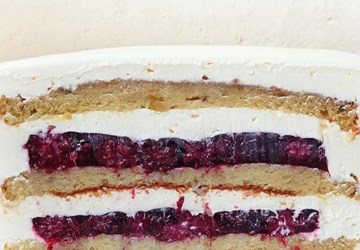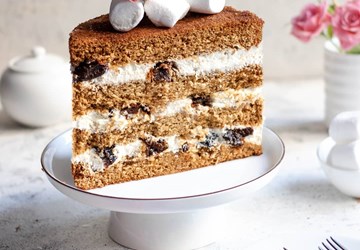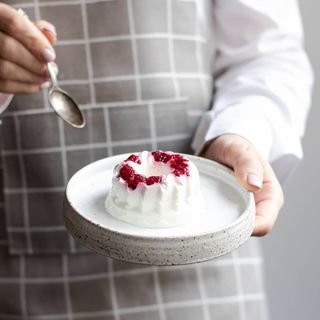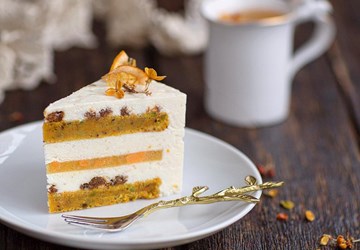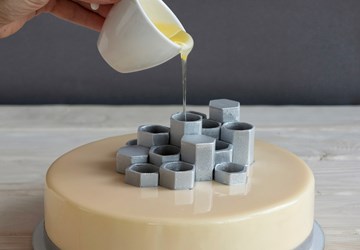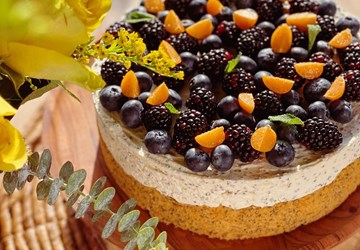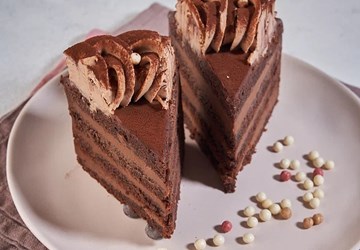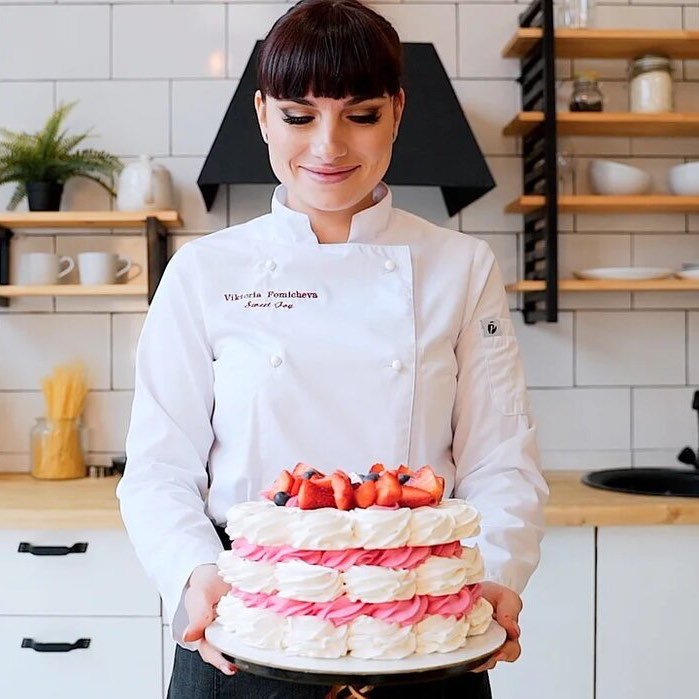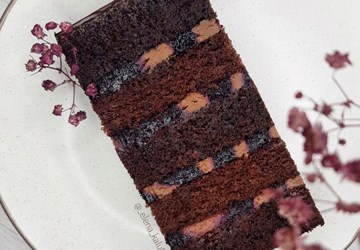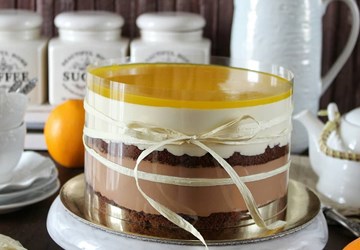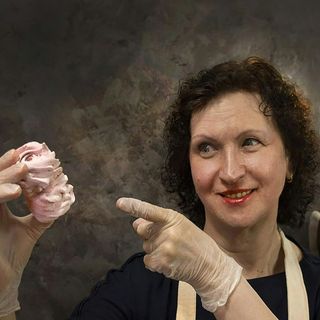Ingredients
Method
Let’s give the floor to Mary: “Hello everyone! I’d like to offer you a wonderful recipe for a fluffy honey cake with flavorous apricot coulis.”
Ingredients
For the cake layers, you will need:
- 250 g sugar | 8.80 oz
- 2 tbsp. honey | 2.00 tbsp
- 50 g butter | 1.75 oz
- 2 eggs | 2.00 items
- 1 tsp baking soda | 1.00 tsp
- 500-550 g flour | 19.40 oz
For the apricot coulis:
- 250 g apricot puree | 8.80 oz
- 50-80 g sugar (to taste) | 2.80 oz | to taste
- 4-5 g pectin | 0.20 oz
For the filling:
- 500-600 g sour cream 25-30% | 21.15 oz
- 250-300 g cream 33-36% | 10.60 oz
- 100-150 g powdered sugar | 5.30 oz
- 1 tsp vanilla extract | 1.00 tsp
- 1-2 sachets of thickener for the cream | 2.00items
For the finishing custard:
- 200 g sour cream 25-30% | 7.05 oz
- 100 g cream 33-36% | 3.55 oz
- 50-80 g powdered sugar | 2.80 oz
- 0.5 tsp vanilla extract | 1.00 tsp
- 0.5-1 sachet of cream thickener | 1.00 item
Dough
- Whisk the sugar, the honey, the butter and the eggs in a heavy-bottomed saucepan. No matter what the temperature of these ingredients is.
- Place the mixture on a low heat and stir it continuously, until the sugar crystals are completely dissolved.
- Remove it from the heat, and add the baking soda. Mix it well. The mass should foam strongly.
- Weigh 550 g (19.40 0z) flour, sift it through a sieve into a large bowl, and pour 50-60 g (1.90 oz) into a separate container.
- Pour the egg-honey mixture from a saucepan into a bowl of flour; mix it well with a spoon, and knead a soft elastic dough with your hands. If the flour is not enough - add a little from the deferred 50-60 g.
- It is very important here not to hammer the dough with the flour. Remember: the more flour you have, the harder your cakes will be. The dough may stick slightly to your hands a little.
- The amount of the flour can vary from time to time. It depends on the size of the eggs you use and the amount of honey you can fit in a tablespoon.
- Put the finished dough in a plastic bag or wrap it in a plastic wrap; leave the dough at the room temperature for 30 to 40 minutes until it cools completely. If in a hurry, you can put it in the fridge for 15 to 20 minutes.
- While the dough is cooling, you can prepare 6 to 12 identical pieces of parchment for rolling the dough out and baking the cakes.
- Turn on the oven at 180C (356F). While it is warming up, use a rolling pin, ground in the flour, to roll out the circles 2-3 mm (0.07 to 0.12 inch) thick on the parchment pieces.
- Using a 18-24 cm ring mold (7 to 9.5 inch), cut the circles and remove the uneven edges. You may prick the dough with a fork. Bake the cakes in the preheated oven for 3 to 4 minutes or until golden brown.
- It is important not to overdry the cakes! When removed from the oven, they should be light golden in color and absolutely soft.
- Take each cake out of the oven, immediately remove it from the baking sheet and leave to cool on a flat surface. Place the next raw dough circle in the oven for 3 to 4 minutes, and so on.
- Thus, bake 8-14 cakes within an hour, depending on the diameter.
Coulis
- Place the apricot puree in a saucepan (preferably with a thick bottom and at least 18 cm | 7 inch in diameter), and warm it up to 30-45C (86 to 113F).
- Mix the sugar with pectin and gradually add it to the warmed puree.
- Keep whisking the coulis, bring it to a boil and boil for 4 to 6 minutes.
- Remove the coulis from the heat and let it cool to the room temperature.
The coulis can be cooked at your own discretion. You can take it less (for 150 g | 5.30 oz of the puree) or, conversely, more (for 300 g | 10.60 oz of the puree). Add the sugar to taste. If you like the sourness - 50 g (1.75 oz) of sugar is enough, if you like it sweeter – then add 75-80 g (2.80 oz).
You can also adjust the thickness of the coulis as desired, varying the pectin amount. If you need a thin coulis as a sauce, then bring to a boil and turn off immediately. If you want it thick, like a jam – then cook it for 6 to 8 minutes after boiling.
If you don’t have the apricots, you can replace them with cherries / strawberries / currants / blueberries, etc.
Filling
- Pour the well-chilled sour cream and the cream into the mixer container. Pour in the powdered sugar and add the vanilla extract.
- Start whisking the mass at a medium speed. If you whip the cream with a planetary mixer, then start with the minimum speed and, as soon as the powdered sugar dissolves, go to the medium mode.
- The cream whips up rather quickly. As soon as the mass starts thickening noticeably, gradually pour 1 sachet of the thickener. Then whip the custard for about 1 to 2 minutes.
- If you see that the custard is not thick enough, then gradually add another sachet of the thickener, and whip the custard for another couple of minutes.
- The finished custard is absolutely stable and completely non-flowing! The thickness of the custard will depend on the fat content of the products used.
- Caution! Be careful: the custard can be easily interrupted. Therefore, after you see the deep patterns from the whisk, you should not whip the custard for more than one minute!
- The sour cream and the cream for cream should be as chilled as possible (place them for at least 5 to 6 hours in the fridge). It is better to use the cream with the maximum fat content.
- Optionally, the cream in the recipe can be completely replaced with the sour cream.
- Add the powdered sugar to taste. The vanilla extract can be substituted for the vanilla sugar.
- Gently mix the finished custard with a silicone spatula (the custard will be more liquid at the bottom, this is absolutely ok - the thickener just didn’t get there) and use immediately as directed.
Cake assembling
- Pour the apricot coulis into a disposable pastry bag and make a small hole in it. The custard can also be applied with a bag (if assembled in a ring mold) or simply with a spatula.
- Lightly grease the plate with the custard so that the cake doesn’t accidentally fall. Put the first cake on it, lightly press it down and grease generously with the custard. Spread the coulis evenly. Adjust the thickness of the layers by yourself. The more coulis you have, the thicker the layer is. You can add the coulis in every second layer. It's up to you.
- Repeat the order up to the last cake. Then you can completely coat the cake with the finishing custard, and put it in the fridge. Or you can wrap it with an acetate film, then put a ring on, and place the cake in the fridge for stabilization for 4 to 6 hours. After that, level the cake and decorate it at your own discretion.
It is advisable to assemble the cake in a ring mold, or at least to put it in a ring mold after assembling, since the sour cream is very unstable.
The amount of the cake custard can also be taken at your discretion. If you take 800-900 g (28.00 oz) for the whole cake, then it will not be completely soaked and you will have something to chew. If you take 1000-1200 g (42.00 oz) of the custard, then the cakes will be completely soaked, but you still have to make a few jaw movements. If your cake takes 1300-1400 g (49.00 oz) of the custard, then tthe cake will simply melt in your mouth and you will just have to close your eyes and enjoy it!
I prefer the golden mean. It is also necessary to take into account the fact that the cake saturation will depend not only on the amount of the cream, but also on its fat content and the density / dryness of the dough cakes.
Good luck, everyone!

